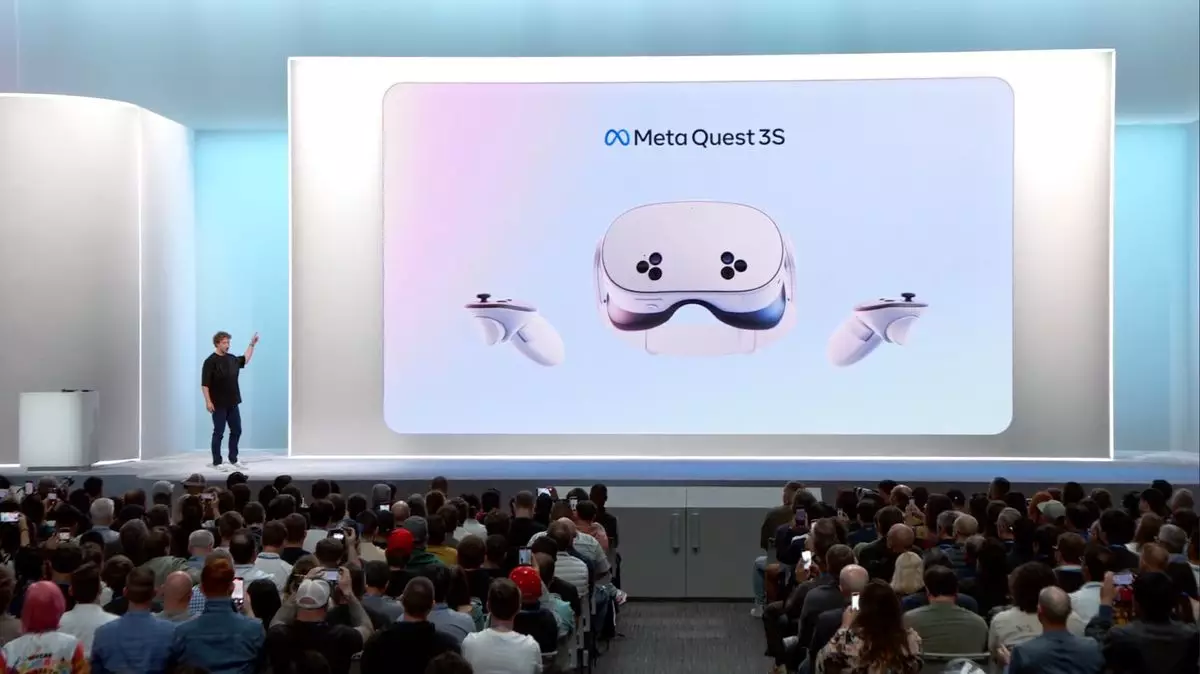In an exciting development for virtual reality enthusiasts, Meta has announced the release of a more affordable version of its popular Quest 3 headset, aptly named the Quest 3S. Scheduled to launch on October 15, the Quest 3S retains many of the advanced features found in its predecessor while offering a more accessible price point. This strategic move is expected to broaden the appeal of Meta’s VR ecosystem, particularly among budget-conscious consumers eager to experience the latest in immersive technology.
The Quest 3S will be available in two distinct models. The entry-level version features 128 GB of storage and is priced at a mere $300, a significant reduction of $200 compared to the standard Quest 3 model. For those who require additional space for their virtual experiences, a 256 GB variant will also be introduced for $400. Both models boast the same advanced Qualcomm Snapdragon XR2 Gen 2 processor, ensuring that users will enjoy a seamless experience with both existing and upcoming virtual reality applications.
Despite the impressive specs, Meta has opted to utilize fresnel lenses in place of the high-end pancake lenses featured in the original Quest 3. This decision could potentially affect the headset’s field of view and comfort, crucial factors that influence user satisfaction. However, the savings on production costs may make the Quest 3S an appealing option for many, especially if the visual experience remains largely consistent with its higher-priced counterpart.
Keynote Highlights and Performance Insights
During Meta Connect, Mark Zuckerberg launched the Quest 3S with enthusiasm, showcasing the device alongside live demonstrations. Although there were technical hiccups during one of the demos—a moment that led to a humorous yet relatable exchange—Zuckerberg remained optimistic. He noted that these glitches are part and parcel of live events, a sentiment that many in the tech community can appreciate.
The keynote also emphasized Meta’s partnership with Microsoft, exploring how the Quest 3S can integrate more efficiently with Windows systems to enhance productivity. The vision presented by Zuckerberg painted the Quest as an extension of the PC, a dual-purpose device that caters not only to gaming but also to everyday computer tasks, thereby expanding its usability beyond traditional VR applications.
With the introduction of the Quest 3S, Meta appears poised to redefine the budget VR headset landscape. As the Quest 2 begins to fade from the marketplace, the new offering will likely become the go-to option for first-time VR users and those looking to upgrade from older systems. The focus on affordability without compromising key performance aspects is an astute move, particularly in an economic climate where consumers are more price-sensitive than ever.
Importantly, this shift could change the recommendations of tech reviewers and consumers alike. Expect to see the Quest 3S emerge at the forefront of discussions about competitive budget headsets, provided its performance lives up to the expectations set during the unveiling.
As Meta releases the Quest 3S, it represents a pivotal step towards making virtual reality technology more accessible for everyone. With commendable features at an impressive price point, this headset has the potential to attract a diverse audience eager to explore immersive experiences without breaking the bank. Whether it performs well in the real world remains to be seen, but initial projections and feedback from the launch event suggest that the Quest 3S could become a staple in the homes of many VR enthusiasts in the months and years to come.


Leave a Reply